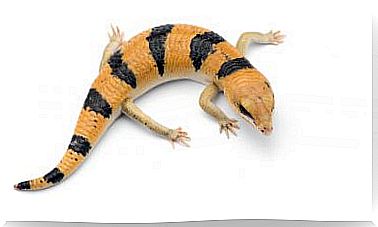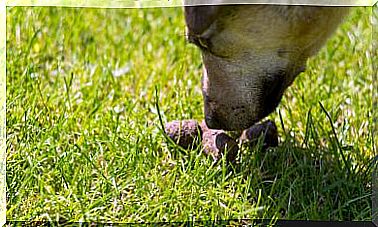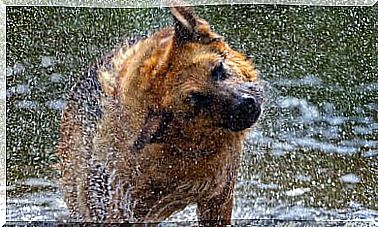Black Mamba: Characteristics, Habitat And Venom
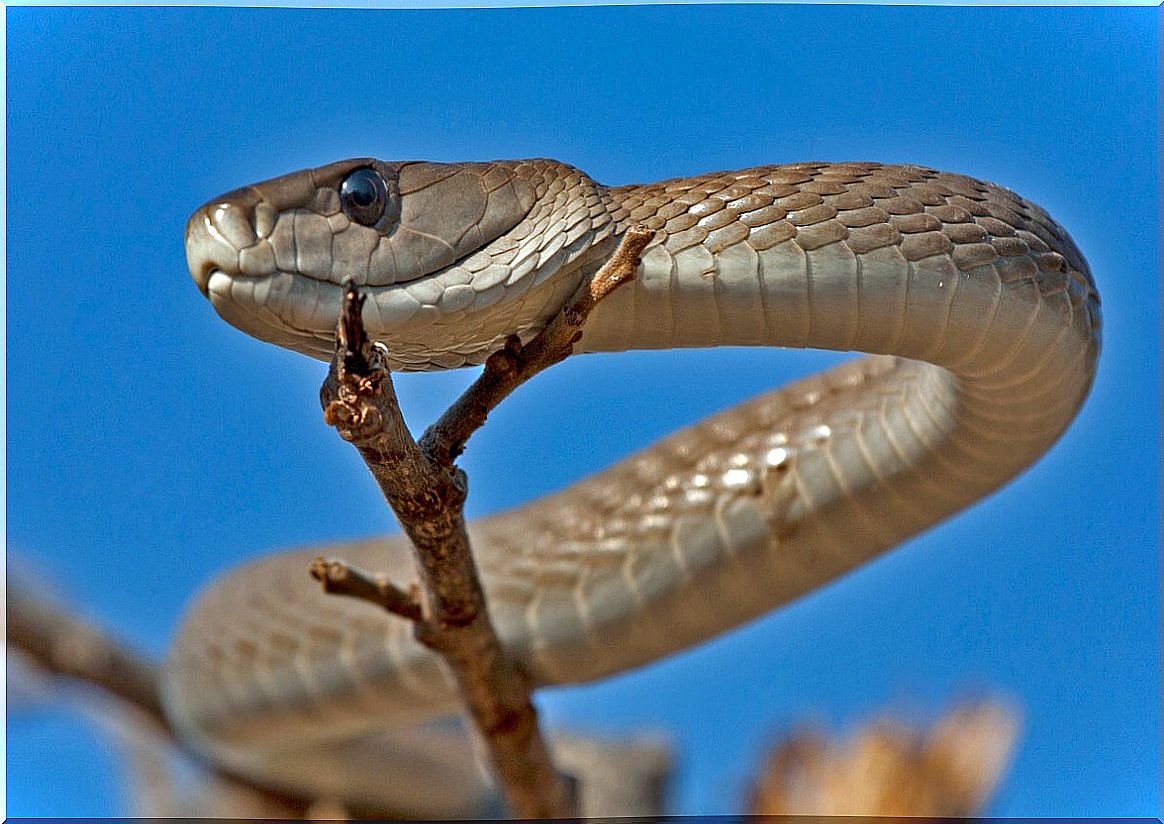
The black mamba ( Dendroaspis polylepis ) is the most poisonous snake in all of Africa, reporting a fatality rate of almost 100% of the patients it attacks. On a continent where some 20,000 people die annually from reptile inoculation with venom, this elapid earns the dubious crown of being the most dangerous.
The black mamba is native to certain areas in sub-Saharan Africa. It was described in 1864 and, since then, it has caused terror both in tourists and in the inhabitants present within its area of distribution. If you want to know everything about this deadly and beautiful reptile, keep reading.
Black mamba: phylogeny and taxonomy
The black mamba ( Dendroaspis polylepis ) is a snake that belongs to the Squamata order , more specifically, to the Elapidae family . Elapids are a group of snakes that includes 55 genera and 360 species, both terrestrial and aquatic, whose general reputation is to be highly poisonous animals.
Elapids are externally similar to snakes ( Colubridae ), as they have a long, slender body covered with smooth scales. The terrestrial species of this family are found in the tropical and subtropical regions of the Earth, generally in the southern hemisphere. They are usually quite active reptiles and, therefore, dangerous.
Returning to the black mamba, within the Elapidae family it is found in the genus Dendroaspis, which includes only 4 species alive today. The snake that concerns us here is the most atypical within its group, since the rest of the mambas are green in color and associated with a tree-dwelling lifestyle.
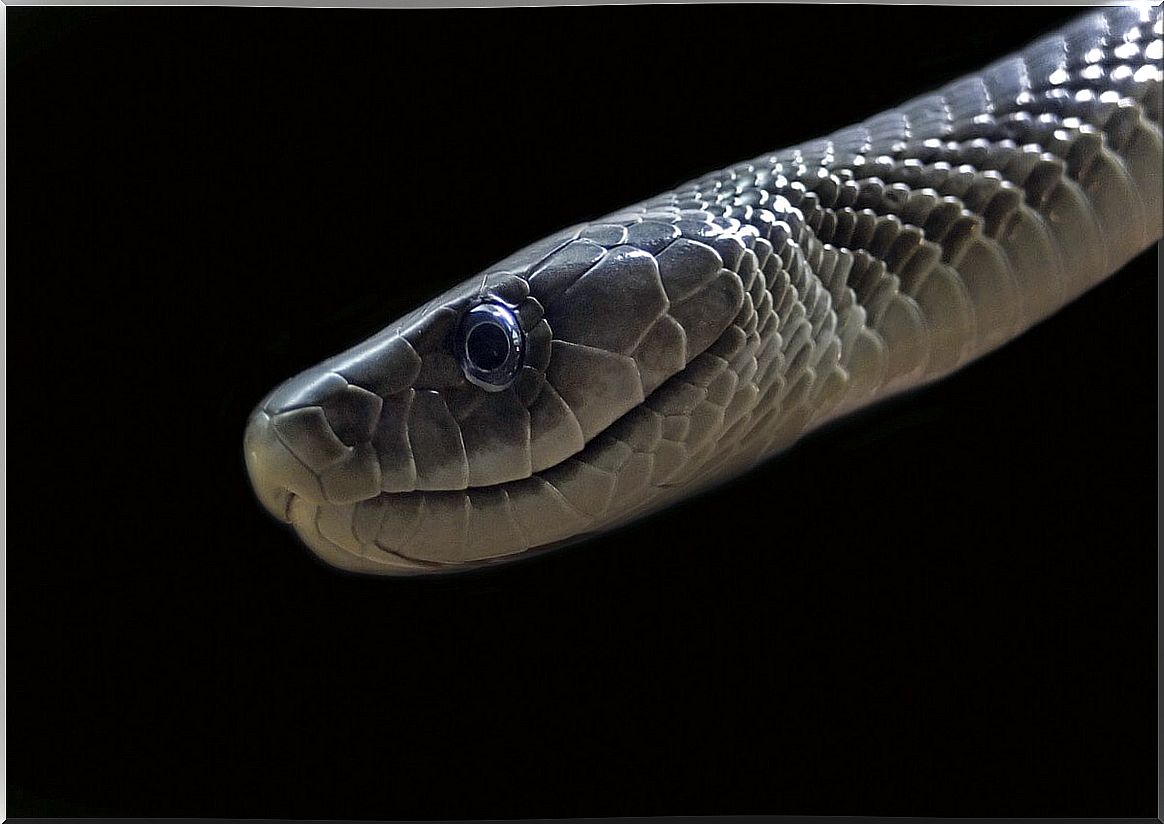
Physical appearance
Like all elapids, the black mamba has an elongated, smooth and slender shape. He has a coffin-shaped head – yes, ironic – with medium-sized eyes. Adult specimens are 2 to 3 meters long, although individuals have been detected that, exceptionally, have reached 4 meters.
Due to the size it can reach, this species holds the second position as the largest venomous snake in the world, only surpassed by the king cobra ( Ophiophagus hannah ) . The black mamba is easily differentiated from the rest of the species with which it shares a gender, because as we have said, the other mambas are green and smaller.
As far as its bite is concerned, this species has fangs that are 6.5 millimeters long. It is a proteroglyphic snake, that is, the venom inoculating fangs are located in the anterior region of the mouth, with a fairly short size. Due to this dentition, elapids must press momentarily to inoculate the venom.
We are facing a graceful, light and very fast species, which makes it even more lethal. On the right surfaces, the black mamba reaches speeds of 16 kilometers per hour in short races. In addition, due to its length, it is able to cover long distances to bite – and do it consecutively.
Distribution
Fortunately – or unfortunately for the inhabitants – the black mamba is endemic to certain regions of Africa and is not found outside them. In its distribution map, we can highlight countries such as Angola, Botswana, Burkina Faso, the Central African Republic, Eritrea, Senegal, Cameroon, Ethiopia and accessory areas.
Despite being eminently terrestrial, the black mamba does well in trees, as do its cousins. The 4 species within the genus Dendroaspis are diurnal predators, feeding on birds, other reptiles, and small-sized mammals.
The poison of the black mamba
We cannot end without highlighting the neurotoxic capacity of the black mamba venom: this species has a 100% fatality rate of bite if the patient is not treated. Such high efficiency is very rare in the reptile world and is therefore considered the second most poisonous snake in the world with respect to its size.
Interestingly, the venom of this snake does not contain protease enzymes and, therefore, does not generate localized necrosis. In any case, this liquid is rich in dendrotoxins, which inhibit nerve receptors and circuits. Due to the speed of the animal, the patient may not even be aware of the bite, but symptoms arrive in about 10 minutes.
The first clinical signs are a drooping of the eyelids (ptosis) and a metallic taste in the mouth. Little by little, the patient experiences a progressive paralysis, which manifests as shortness of breath, inability to swallow, blurred vision and, finally, respiratory arrest. Without treatment, collapse occurs in about 45 minutes.

As you have seen, the black mamba has tools to frighten the bravest. Its venom is extremely lethal on its own, but its speed and graceful biting make this reptile a true killing machine. Like all animals, it deserves respect and conservation efforts, but in this case, always from afar.

